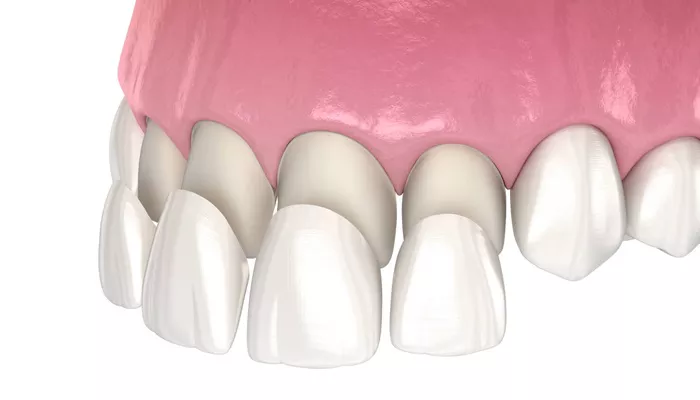Teeth whitening has become a popular cosmetic procedure, with many people seeking brighter smiles through various whitening products and treatments. While the desire for a whiter smile is understandable, there are several reasons why teeth whitening can be detrimental to dental health. This article will explore the potential negative effects of teeth whitening on teeth, the underlying mechanisms of these effects, and safer alternatives for achieving a brighter smile.
Understanding Teeth Whitening
What is Teeth Whitening?
Teeth whitening refers to the process of lightening the color of teeth to enhance their appearance. This can be achieved through various methods, including:
In-office treatments: Performed by dental professionals using stronger bleaching agents.
At-home kits: Over-the-counter products that often contain lower concentrations of bleaching agents.
Natural remedies: Methods such as baking soda, activated charcoal, or hydrogen peroxide.
Common Whitening Agents
The most common active ingredients in teeth whitening products are hydrogen peroxide and carbamide peroxide. These compounds work by penetrating the enamel and dentin layers of the teeth, breaking down stains and discoloration. While effective, these agents can also have harmful effects on tooth structure and overall dental health.
Potential Negative Effects of Teeth Whitening
1. Enamel Erosion
One of the most significant concerns regarding teeth whitening is the potential for enamel erosion. Enamel is the hard, protective outer layer of teeth. When exposed to acidic substances, including some whitening agents, the enamel can wear away over time.
How Whitening Causes Enamel Erosion
Acidic pH: Many whitening products have a low pH, making them acidic. This acidity can lead to the demineralization of enamel, making it more susceptible to wear and decay.
Overuse of Products: Frequent use of whitening products can exacerbate enamel erosion. Individuals who continuously seek whiter teeth may not realize the cumulative effects of repeated applications.
2. Increased Tooth Sensitivity
Tooth sensitivity is a common side effect of teeth whitening. Many people experience heightened sensitivity during and after the whitening process, which can be uncomfortable and painful.
Causes of Sensitivity
Enamel Thinning: As enamel erodes, the underlying dentin becomes exposed. Dentin contains tiny tubules that lead to nerve endings, making teeth more sensitive to temperature changes and certain foods.
Chemical Irritation: Whitening agents can irritate the nerves within the teeth, leading to discomfort. This sensitivity may persist for days or even weeks after treatment.
3. Gum Irritation
Teeth whitening can also cause irritation to the gums. Many whitening products contain strong bleaching agents that, if they come into contact with gum tissue, can lead to inflammation and discomfort.
Symptoms of Gum Irritation
Redness: Inflamed gums may appear red and swollen.
Pain or Discomfort: Individuals may experience tenderness or pain in the gums following treatment.
Chemical Burns: In severe cases, prolonged contact with whitening agents can result in chemical burns on the gum tissue.
4. Uneven Results
Teeth whitening may lead to uneven results, especially in individuals with dental restorations such as crowns, veneers, or fillings. These materials do not respond to whitening agents, which can create a noticeable contrast between natural teeth and dental work.
Consequences of Uneven Whitening
Aesthetic Concerns: Uneven whitening can lead to dissatisfaction with the overall appearance of the smile.
Need for Additional Treatments: Some individuals may seek additional cosmetic treatments to address the discrepancies, leading to increased dental expenses.
Long-Term Effects of Teeth Whitening
1. Increased Risk of Tooth Decay
As enamel erodes and teeth become more sensitive, the risk of tooth decay may increase. Weakened enamel is less effective at protecting against cavities and other dental issues.
How Decay Develops
Bacterial Invasion: Eroded enamel allows bacteria to penetrate the tooth structure more easily, increasing the likelihood of decay.
Dietary Choices: Individuals with sensitive teeth may avoid certain foods, leading to poor dietary habits that can further harm dental health.
2. Impact on Oral Health
Frequent whitening treatments can negatively affect overall oral health. The combination of enamel erosion, increased sensitivity, and gum irritation can create a cycle of dental problems.
Potential Oral Health Issues
Gum Disease: Irritated gums can lead to periodontal disease if not addressed.
Tooth Loss: Severe decay resulting from weakened enamel can ultimately lead to tooth loss.
Safer Alternatives to Teeth Whitening
1. Professional Consultation
Before undergoing any teeth whitening treatment, it is essential to consult with a dental professional. A dentist can assess your oral health and recommend the safest and most effective whitening options.
2. Gradual Whitening Methods
Instead of using strong whitening agents, consider gradual whitening methods that are less likely to harm enamel. These may include:
Whitening Toothpaste: Formulated with mild abrasives and low concentrations of whitening agents, these products can help remove surface stains without significant damage to enamel.
Natural Remedies: Some individuals opt for natural whitening methods, such as using baking soda or activated charcoal.
While these methods may be less effective than professional treatments, they are generally gentler on teeth.
3. Good Oral Hygiene Practices
Maintaining good oral hygiene can help prevent stains and discoloration without the need for aggressive whitening treatments. Key practices include:
Regular Brushing and Flossing: Brush at least twice a day and floss daily to remove plaque and food particles.
Routine Dental Check-ups: Regular visits to the dentist for cleanings and check-ups can help identify and address issues before they require more extensive treatments.
Conclusion
While the desire for a whiter smile is understandable, it is essential to recognize the potential risks associated with teeth whitening. Enamel erosion, increased tooth sensitivity, gum irritation, and uneven results are just a few of the negative effects that can arise from the use of whitening products. Additionally, the long-term consequences of frequent whitening treatments can lead to increased dental problems and a decline in overall oral health.
For those seeking a brighter smile, it is crucial to explore safer alternatives and consult with a dental professional before undergoing any whitening treatment. By prioritizing dental health and using gentle methods, individuals can achieve a brighter smile without compromising the integrity of their teeth.
Related topics:

